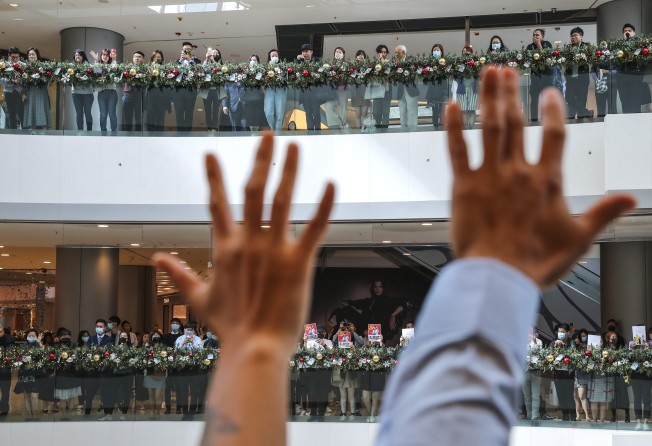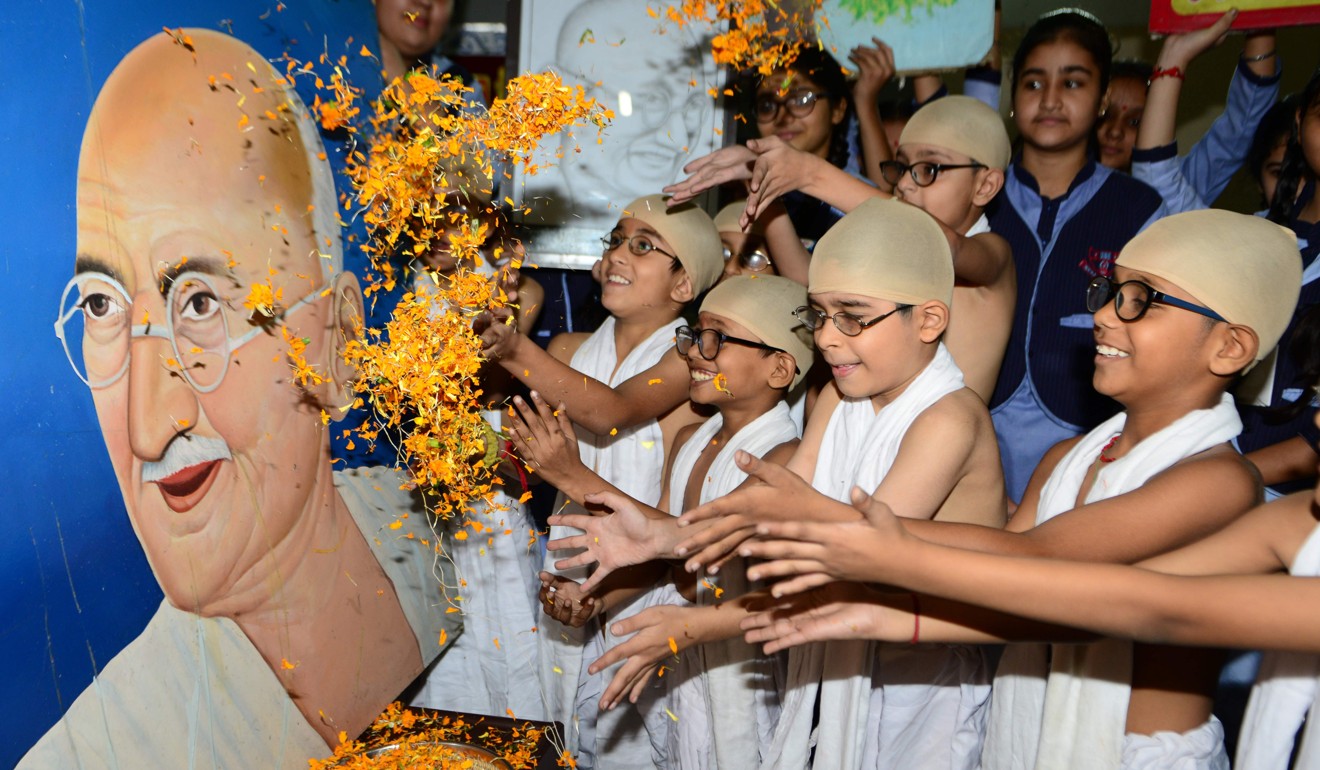Gandhi’s real lesson for Hong Kong in the midst of protests: cowardice is worse than using violence
- Why lambast protesters’ violence but not the government coercion that led to it, or the failure to punish triad attacks?
- We should keep in mind that Gandhi promoted non-violence, but his greatest contempt was for those who cower in the face of injustice

Accusations of violence against both protesters and police have been a constant in the Hong Kong protests. Perhaps we need to turn to great minds like Mahatma Gandhi for some perspective.
First, the Hong Kong government should be held responsible for the escalation of violence after trying to push through the extradition bill that would have subjected Hongkongers to Beijing’s arbitrary jurisdiction. In early June, more than a million people took to the streets to express their concern, only for the government to proceed with a second reading.
The violence really escalated after July 21, when more than 100 armed men in white shirts attacked civilians and passengers in Yuen Long MTR station.
That attack was a watershed because the possible collusion between police and triads has never been seriously addressed. So far, more than 30 triad members have been arrested but only two are confirmed to have been charged with a crime. On the protesters’ side, more than 500 have been charged and more than 5,000 arrested. Is this justice?
To be fair, protesters have resorted to violence as well, though on a lesser scale. But do they have alternatives?
The “umbrella movement” in 2014 simply asked for what Hongkongers had been promised: universal suffrage to elect their own leaders. But all thet achieved was a much more aggressive and oppressive intervention from Beijing, culminating in the disappearance of five booksellers.
That sent a chill through Hongkongers, which is why there is a palpable sense of urgency in the 2019 protests.
Gandhi showed great insight when he talked about the correlation between non-violence and cowardice. In 1924, he wrote: “My non-violence does not admit of running away from danger and leaving dear ones unprotected. Between violence and cowardly flight, I can only prefer violence to cowardice.”
As the struggle against British colonisers deepened, in 1939, Gandhi said: “For I cannot in any case tolerate cowardice. Let no one say when I am gone that I taught the people to be cowards. I would far rather that you died bravely dealing a blow and receiving a blow than died in abject terror. Fleeing from battle is cowardice and unworthy of a warrior. Cowardice is worse than violence because cowards can never be non-violent.”

The public rhetoric, especially from mainland state media, has set the bar ridiculously high for protesters. Even Gandhi had a life replete with contradictory thoughts and actions about non-violence.
In What Gandhi Says About Nonviolence, Resistance and Courage , Norman G. Finkelstein points out that Gandhi once made the statement that even if a “defenceless sister or mother [were] threatened with molestation by an evil-minded ruffian”, resorting to violence could not be justified; however, he then justified the use of violence “against the whole world if I found myself in a corner when I could not save a helpless girl from violation.”
Finkelstein goes on to note that Gandhi could condemn violence as a “living wall of pickets in order to prevent the entry of persons into picketed places”, but in the meantime told an Indian correspondent he should “deliberately ... stand as to obstruct the view of the usurper when his seat was snatched by a British soldier at the cinema”.
I am not defending violence, but not all violence is created equal, and every case should be judged on its own merit by a court of law.

Violence takes more than one form. In Gandhi’s Way: A Handbook for Conflict Resolution , Professor Mark Juergensmeyer at the University of California, Santa Barbara, said coercion is also violence because it “lowers the opponent’s dignity to the level of a caged animal”, and if force is coercive “it bears the mark of violence all the same”, regardless of whether physical force is involved.
Who is more coercive, Hongkongers or Beijing? That’s a no-brainer. If people were not coerced into giving up their rights to elect their own leader, the umbrella movement would not have happened in 2014. If attempts had not been made to coerce Hongkongers into accepting the extradition bill, we would not be in the midst of this crisis today.
The future looks even more worrisome. On November 14, the Communist Party unveiled a “patriotic education” plan to include Hong Kong, aimed at achieving ideological “unity”. With a focus on young people, the document says the plan is to “make full use of classroom teaching, and cultivate students' patriotic feelings so as to train the next generation to build and inherit socialism”.
The pan-democrats’ landslide victory in the district council elections sends a clear message to the whole world: it’s more imperative than ever for Beijing and the Hong Kong government to make things right. If the response to the election results is more coercive measures from central government leaders and Chief Executive Carrie Lam Cheng Yuet-ngor, they should be held responsible for the inevitable return of violence.
In discussions with local leaders on how to end internecine bloodletting in India, Gandhi said: “Go in the midst of rioters and prevent them from indulging in madness or get killed in the attempt. But do not come back alive to report failure. The situation calls for sacrifice on the part of top-rankers.”
If this standard is too high for Lam, there is a simple solution: quit.
Billy Huang has served media outlets in Beijing, Hong Kong, Singapore and the United States for more than 20 years. [email protected]